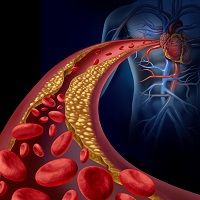Article
An LDL-C Target of 70 mg Reduces Risk of Recurrent Stroke
Author(s):
Results of the "Treat Stroke to Target" trial found an LDL-C target of 70 mg/dL led to a significant reduction in secondary stroke events.

New data presented at the American Heart Association (AHA) 2019 Scientific Sessions in Philadelphia is revealing a multitude of benefits when achieving a target LDL-C of less than 70 mg/dL in patients who suffered a recent stroke.
With AHA/ASA guidelines lacking a target level of LDL-C cholesterol, investigators sought to determine the differences in relative risk when the target LDL-C is less than 70 mg/DL compared to 100 mg/dL.
“This trial shows that after an ischemic stroke with evidence of target LDL cholesterol of less than 70 mg compared to 100 mg reduced the risk of subsequent cardiovascular events with no increase in intracranial hemorrhage and no increase in newly diagnosed diabetes,” said lead investigator and presenter Pierre Amarenco, MD.
In an effort to further illustrate the effects of target LDL-C after an ischemic stroke of atherosclerotic origin, investigators initiated a clinical trial that included more than 2800 patients who were randomized one of the aforementioned LDL-C targets. The primary endpoint of the study was a composite of non-fatal ischemic stroke or undetermined stroke, non-fatal myocardial infarction, unstable angina followed by urgent coronary revascularization, transient ischemic attack followed by urgent carotid revascularization, and vascular death including sudden death.
In total 2873 patients were randomized into the trial, of which 1440 were randomized to an LDL-C target of less than 70 mg/dL and 1433 to LDL-C of 100±10 mg/dL. Of these patients, 996 completed the study in the 70 mg/dL group and 1023 completed the study in the other.
Among patients in the 70 mg/dL group, the mean age was 66.4 years, 67.9% were males, and the mean BMI was 25.6. Among patients in the 100 mg/dL group, the mean age was 67 years, 67.3% were men, and the mean BMI was 25.5. Ischemic stroke was the primary entry event for both groups, represented 85.6% of patients in the 70 mg/dL group and 86% of the 100 mg/dL group.
Upon analysis, investigators found the mean LDL-C level in the 100±10 mg/dL group was 96 mg/dL and 65 mg/dL in the 70 mg/dL group after a media of 3.5 years. In analyses adjusted for covariates including age, sex, time from symptom onset, location, and entry events, investigators found the primary composite endpoint occurred in 156 (10.9% of patients in the 100 mg/dL group and in 121 (8.5%) of the 70 mg/dL group without increasing the risk of hemorrhagic stroke or newly diagnosed diabetes (HR 0.78, 95% CI, 0.61-0.98; P=0.036).
This study, titled “Benefit of a Target LDL Cholesterol Less Than 70 mg/dl After an Ischemic Stroke of Atherosclerotic Origin, the Treat Stroke to Target Trial Results,” was presented by Pierre Amarenco, MD, of AHA 2019.





